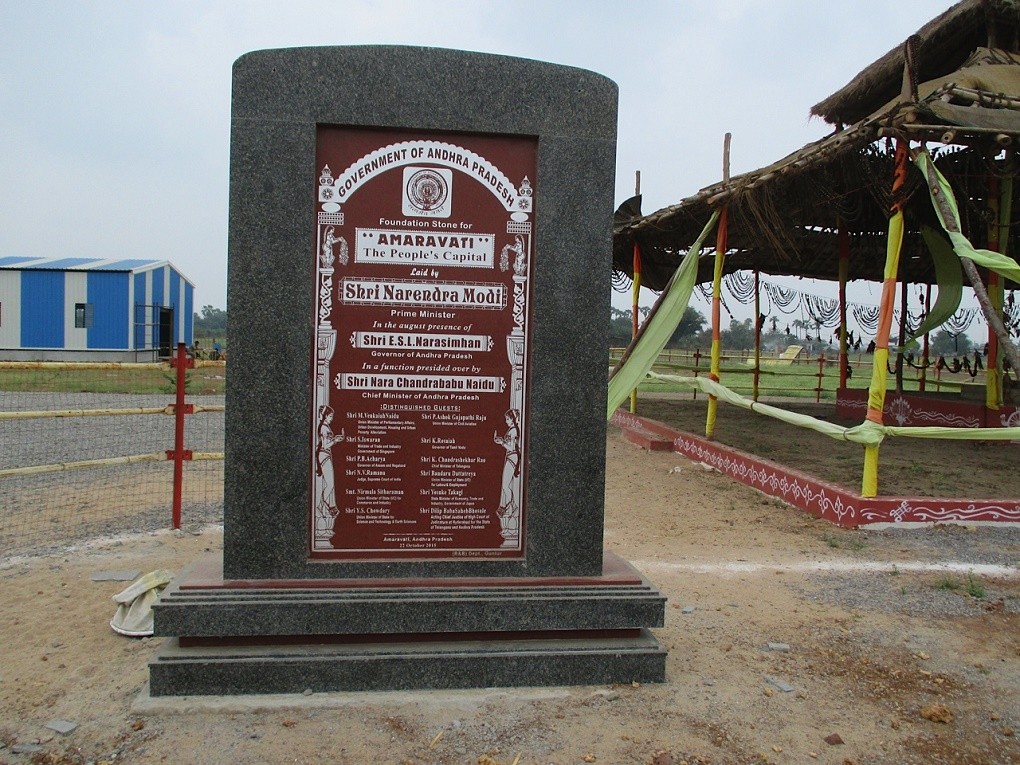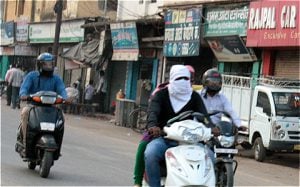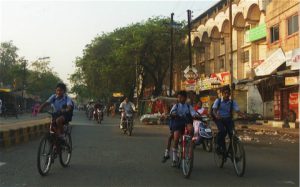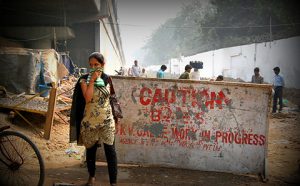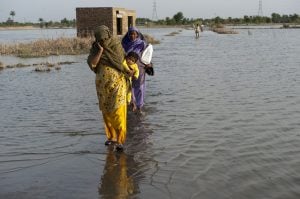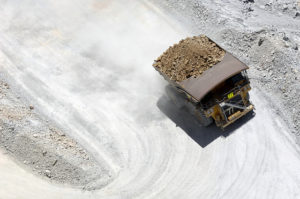Amaravati, the great Buddhist city that flourished between 400 BCE and 1100 CE is set to be revived as India’s newest “smart city”. On 22 October 2015 India’s Prime Minister Narendra Modi laid the foundation stone of a new city in a banana grove on the southern banks of the Krishna river, located near where the ancient city had once flourished. The ceremony marked the beginning of a dream project for the Chief Minister of Andhra Pradesh, N. Chandrababu Naidu.
A substantial section of the old state of Andhra Pradesh in southern India was carved out into a new state, Telangana in June 2014. Telangana received Hyderabad — the erstwhile capital of united Andhra Pradesh — as its own capital. The new, smaller, Andhra Pradesh either had to choose another city for its own capital, or build a new one. It has chosen to build a city to be called Amaravati.
It is only the second time in independent India that a state capital is being built from scratch. The earlier one was Chandigarh, built in 1960, which is now the joint capital of Punjab and Haryana states. The Amaravati project will also tie in to the current Indian government’s efforts to promote “smart cities”.
High aspirations
The Master Plan of the Andhra Pradesh Capital Regional Development Authority (APCRDA) states that Amaravati will be a “world class capital city that respects its roots and people, but at the same time lays the foundation for a state of art modern city.” It is also being planned as the focus of growth for the capital region, which comprises Vijayawada and Guntur and nine adjoining towns.
Amaravati is to be developed under an Urban Sustainability Framework, which will look at considerations of capacity, economics, housing, culture and heritage, energy and resources and nature. The six key sustainability issues identified in the plan are: creating jobs, attracting investments, providing housing facilities, preserving nature and environment, managing floods and conserving the heritage sites.
Amaravati is expected to have an efficient public transport system, use renewable energy, conserve water, promote green spaces and clean industries and minimise its carbon footprint. To give economies of scale to institutions and businesses, the city has earmarked special areas such as government, justice, education and knowledge, finance, electronics, health, sports, media and tourism cities. The projection is that the city will be able to generate up to 1.5 million jobs for a population of 2.5 million by 2050.
“We are looking at sustainability as the city’s longevity,” said Nagulapalli Srikant, the commissioner of APCRDA. “It should not affect the external environment and internally it should be clean. It should also be resilient to flood. As part of the master plan we have seen to it that it would not be a polluted or a bad city to live in. It would be a walkable city where people would like to come, work and settle down.”
To reduce pollution, the plan envisages high-rise buildings near metro and bus rapid transit system stations. This is to encourage higher population density along these corridors and encourage the use of public transport for commuting.
Money problems, land problems
Though the development of Amaravati and the capital region is a prestigious project for Chandrababu Naidu, it is facing a funds crunch. In the state’s budget presented for 2015-16, the government had a revenue deficit of INR 72.99 billion (USD 1.08 billion) and a fiscal deficit of INR 175.84 billion (USD 2.59 billion). If the state has no money it is hard to see how it will be able afford the costs of building the infrastructure needed. While Amaravati has been earmarked as “smart city” under a new Indian government scheme, which would mean it would be allocated INR 5 billion (USD 73 million) each from the central and state governments, there is no clarity on how this money will be distributed, especially when the state in question is so heavily in debt already.
Maybe more problematic is the location of the city. The capital is being built on 217 square kilometres of prime agricultural land on the bank of the Krishna. According to M. Seshagiri Rao, president of the capital region farmers’ federation, over hundred types of crops are grown on the land right now. This includes cereals such as rice, maize, sorghum and millets; pulses and a variety of vegetables, fruits and flowers.
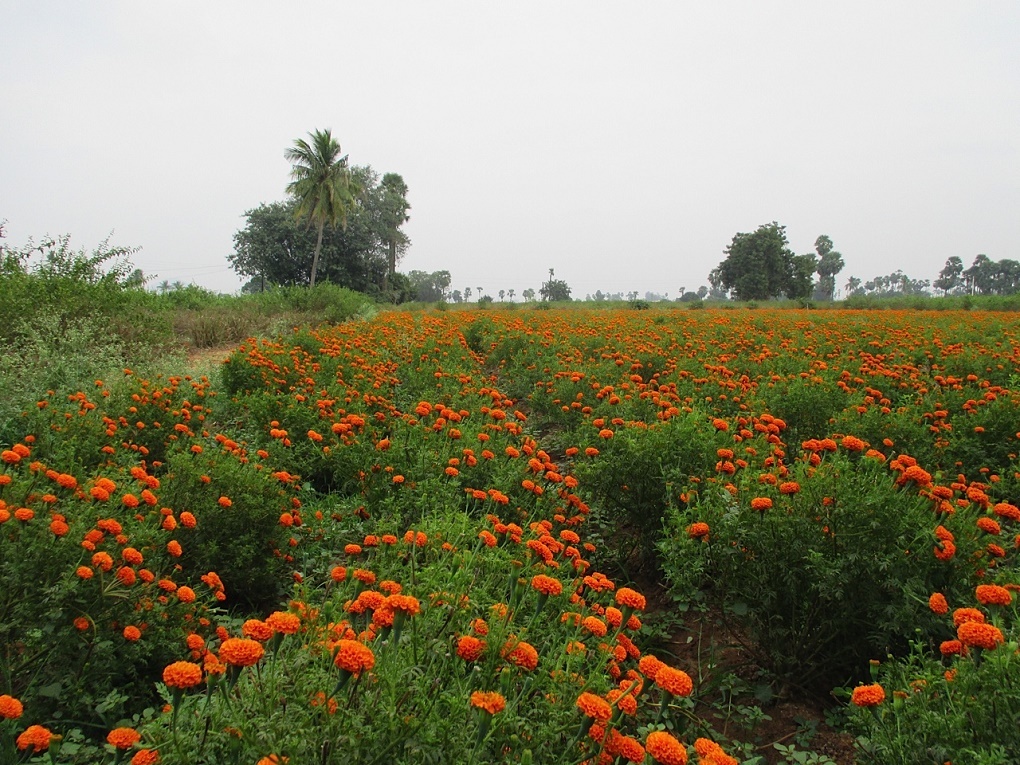
A marigold farm at the location of the proposed city (Image by S. Gopikrishna Warrier)
Not all the farmers are happy about the new development. In Nidamarru village, which is at the furthest distance from the river, farmers earn an attractive income from growing flowers. J. Naga Reddy, who did not agree to sell his farm for the capital, grows three kinds of jasmine and gets a rent of up to Rs 100,000 for (USD 1,500) an acre per year. “I get produce all through the year and I am not interested in giving up my land,” he said. “What will I do in a city?”
Land pooling
As in other countries, land acquisition has been a very emotive subject in India, leading to a deadlock between farmers and developers. The Andhra Pradesh government decided to use an innovative land pooling scheme (LPS) where farmers could pool their agricultural land for the capital and get developed residential and commercial land in return in the new city (from 1,200 to 1,450 square yards per acre of agricultural land pooled). “The broad objective of the scheme is to do justice to the families affected by the construction of a liveable and sustainable capital city for the state of Andhra Pradesh by making the landowners and local residents as partners in development,” states the government notification.
According to the master plan, the land returned to the farmer would be within the same village boundary from which the farm land was pooled, would be close to existing village settlements and would have good road connectivity. Not only that, the LPS benefited from the fact that the area chosen for the city has a large number of supporters from the governing party of the state. The state says that 31,000 acres of the 33,000 acres of land needed for the city is said to have been acquired, although critics allege serious irregularities with the process.
Days before the laying of the foundation stone, the banana plants at the site were cut due to security reasons. This became a symbol of what may happen to the fertile land. Eminent agricultural scientist M.S. Swaminathan tweeted his message of caution: “#Amaravati is in world’s best farming regions. Hope following principles will be used by the dynamic @ncbn [N. Chandrababu Naidu] while shaping Amaravati’s personality.” He followed up with subsequent tweets giving suggestions for making Amaravati sustainable.
Swaminathan’s tweets capture the essence of Amaravati’s dilemma. There is an opportunity to design the new city as an engine of economic growth while ensuring that it is more sustainable, climate resilient and incorporates the best of international practices. On the other hand, the new city eats into the agricultural economy, thus affecting the livelihood of the farmers in 31 villages.
Droughts and floods
The city is also vulnerable to floods. “Different cities have different priorities, and for us the main interest is to protect the city from floods,” said Nagulapalli Srikant, APCRDA Commissioner. Amaravati is located between the Krishna river and some low hills of the Deccan Plateau. If it rains in the hills, a smart system – using flood modelling data and computers – should be able to predict the amount of water that will reach the city, and then open the gates to a diversion canal, check the reservoir capacity and pump if necessary. Similarly, the smart system can manage the sewerage system, so that more pumps work when there is a lot of water flowing.
None of this answers the question — why is Amaravati being built on such a vulnerable spot? There are three states upstream on the Krishna — Telangana, Karnataka and Maharashtra. All have plans to use more of its water for irrigation and hydropower. The Andhra Pradesh government is thinking of a backup — to divert water from the Godavari river to supplement the city’s water supply during the lean season. That is a scheme with serious drawbacks. A canal will have to be dug through more fertile land; the water will have to be pumped at a huge cost in terms of energy and carbon footprint.
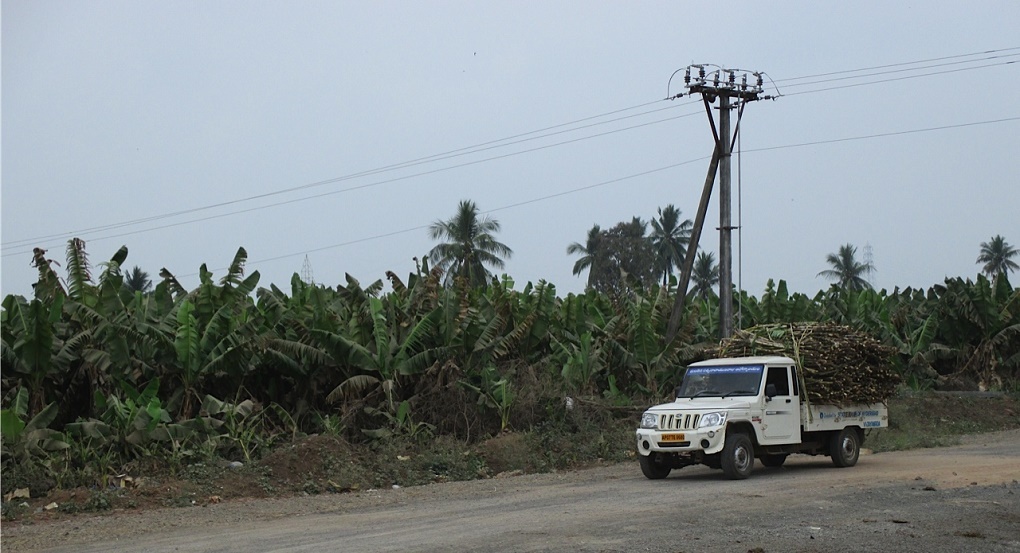
A banana grove near the foundation stone (Image by S. Gopikrishna Warrier)
And when it rains heavily and upper riparian states let the water out of their dams, the new city may be flooded. That happens now to the farms over which Amaravati is being planned. One of the flood management strategies listed in the Master Plan is to fix a minimum platform height of 25 metres above sea level for future developments in the city. “As a rule of thumb, the existing ground level should be topped up to a higher level than the maximum predicted flood level in each zone,” the plan states.
Amaravati sits at the confluence of the Kondaveeti Vagu and Krishna rivers. The Kondaveeti Vagu and its tributaries flow across the capital city site, inundating over about 13,500 acres of land every year during the monsoon season. The low-lying regions within the capital city development area floods two to three times every year, with the inundation usually lasting for five to seven days.
In addition to raising the city, other strategies include reinforcing the existing Krishna river bund; collecting storm water in ponds, building reservoirs, providing a green belt along the water bodies and discharging excess water into the Krishna.
Flooding the neighbours
In short, due to the location of the city, there is need for expensive flood control measures to ensure that it does not go under water when it rains or when the states upstream let out water from the dams. It also creates problems for the villages around, and for the farmers who have pooled their agricultural land and are in return expecting domestic and commercial plots in the new capital.
M. Seshagiri Rao, president of the capital region farmers’ federation, said that if the land in the capital is raised 25 metres above sea level, then all the surrounding villages will be flooded whenever it rains. The villages will also have to raise their land at enormous cost if they are to avoid being flooded.
